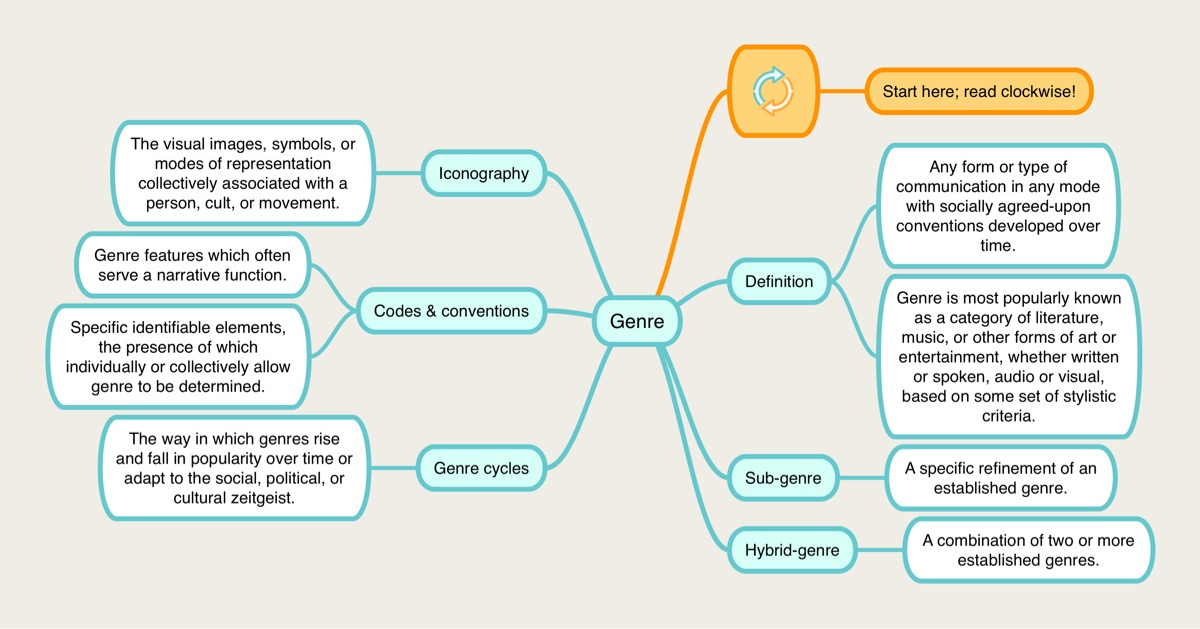In the Oxford dictionary, genre is defined as “a style or category of art, music, or literature”, and in film it is used to categorise movies. There are thirteen main genres:
Romance
Crime
Fantasy
Comedy
War
Western
Mystery
Thriller
Sports
Science Fiction
Drama
Action
Horror
However, there are also sub-genres. These are more specific genres that belong to one of the main, broader genres. For example, dystopian is a sub-genre of science fiction. A hybrid-genre is similar to a sub-genre but is “a combination of two or more established genres”, a well known example of this is rom-com.
Over time, the types of film produced change according to its popularity. As the social, political and cultural zeigeist, and trends change, the popularity of genres change. In the period of 1940-1960 in America, western films were popular. However in the last few decades, superhero and action films have risen in popularity.
The way that an audience can identify which genre a film belongs to is its codes and conventions. These are the features and elements of a certain genre that can occur in a film. For example, if a director was making a horror film, they would try to create tension through the use of mystery, gore, suspense, shock and terror. They would also use the key elements of film form (cinematography, editing, sound, mis-en-scene) to create a certain atmosphere which would help the audience to recognise the genre.
Iconography is “a pattern of signs we associate with a particular genre”. This also allows the audience to identify the genre. An example of this is the futuristic props, setting and costumes used for science fiction films.


